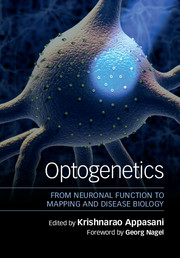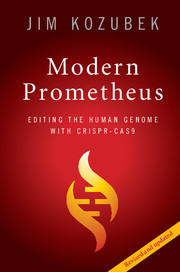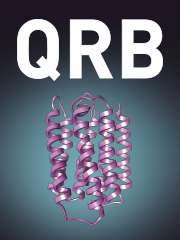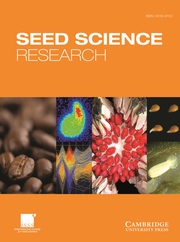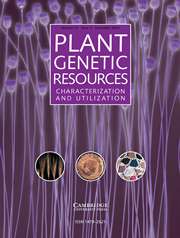Optogenetics
From Neuronal Function to Mapping and Disease Biology
£154.00
- Editor: Krishnarao Appasani, GeneExpression Systems, Inc., Massachusetts
- Date Published: April 2017
- availability: In stock
- format: Hardback
- isbn: 9781107053014
£
154.00
Hardback
Other available formats:
eBook
Looking for an inspection copy?
This title is not currently available on inspection
-
Discovered little more than a decade ago, optogenetics - a revolutionary technique combining genetic and optical methods to observe and control the function of neurons - is now a widely used research tool. Optogenetics-driven research has led to insights into Parkinson's disease and other neurological and psychiatric disorders. With contributions from leaders and innovators from both academia and industry, this volume explores the discovery and application of optogenetics, from the basic science to its potential clinical use. Chapters cover a range of optogenetics applications, including for brain circuits, plasticity, memory, learning, sleep, vision and neurodegenerative and neuropsychiatric diseases. Providing authoritative coverage of the huge potential that optogenetics research carries, this is an ideal resource for researchers and graduate students, as well as for those working in the biotechnology and pharmaceutical industries and in a clinical setting.
Read more- The first text to examine in full the discovery and application of optogenetics techniques, from the basic science to potential clinical use
- Features contributions from experts from both academia and industry, covering the use of optogenetics in model organisms, opsin biological tools, and applications in neurobiology and neurodegenerative diseases
- Places special emphasis on the development of a new generation of tools for the in vivo imaging of learning, neuro-psychiatric diseases and behavior
Reviews & endorsements
'Optogenetics has transformed neuroscience and has become a key element of the toolkit used by thousands of labs worldwide. If anyone needs convincing that the field of optogenetics has come of age, this book provides compelling evidence. Written by leading experts in the field and covering the gamut of optogenetics research from tool development and use in basic research through to translational applications, Optogenetics exemplifies how this technique now illuminates all areas of neuroscience research.' Michael Hausser, University College London,
See more reviews''Let there be light'. Or more precisely, deliver the needed wavelength at appropriate power, with high temporal and spatial resolution if you want to figure out how brain circuits work. This volume has many excellent chapters and the right toolbox for the job.' György Buzsáki, Neuroscience Institute and Langone Medical Center, New York University
'Optogenetics is a unique compilation of articles by some of the key experts in the field covering the entire breadth of topics from molecular mechanisms, via hands-on application tips all the way to clinical use and ethical implications as well as a detailed and accurate historical perspective. For this still rapidly developing field it will become a must-read and core reference for novices and experts alike.' Andreas Schaefer, he Francis Crick Institute, London
'Both the expert and novice, alike, will find this to be a valuable resource that covers multiple aspects of the Optogenetics field, from its history through to current scientific and potential clinical applications.' Michelle M. Sidor, Novartis Institutes for Biomedical Research, Massachusetts
Customer reviews
Not yet reviewed
Be the first to review
Review was not posted due to profanity
×Product details
- Date Published: April 2017
- format: Hardback
- isbn: 9781107053014
- length: 502 pages
- dimensions: 253 x 179 x 29 mm
- weight: 1.2kg
- contains: 65 b/w illus. 37 colour illus. 6 tables
- availability: In stock
Table of Contents
List of contributors
Foreword
Preface
List of abbreviations
Part I. Optogenetics in Model Organisms:
1. Introduction to optogenetics: from neuronal function to mapping and disease biology
2. Uncovering key neurons for manipulation in mammals
3. From connectome to function: using optogenetics to shed light on the Caenorhabditis elegans nervous system
4. From synapse to behaviour: optogenetic tools for investigation of the Caenorhabditis elegans nervous system
5. Using optogenetics in vivo to stimulate regeneration in Xenopus laevis
Part II. Opsin Biology, Tools and Technology Platform:
6. Sodium and engineered potassium light-driven pumps
7. Simultaneous electrophysiology and optogenetic stimulation methods
8. Role of electrical activity in horizontal axon growth in the developing cortex: a time-lapse study using optogenetic stimulation
9. Development of an optogenetic tool to regulate protein stability in vivo
10. Photo-activatable nucleotide cyclases for synthetic photobiology applications
11. Bioluminescence activation of light-sensing molecules
Part III. Optogenetics in Neurobiology, Brain Circuits and Plasticity:
12. Optogenetics for neurological disorders: what is a path to the clinic?
13. Optogenetic control of astroglia
14. Optogenetics for neurohormones and neuropeptides: focus on oxytocin
15. Optogenetic approaches to investigate brain circuits
16. Optogenetic mapping of neuronal connections and their plasticity
Part IV. Optogenetics in Learning, Neuro-psychiatric Diseases and Behavior:
17. Optogenetics to study reward learning and addiction
18. Optogenetics and the dissection of neural circuits underlying depression and substance-use disorders
19. Optogenetics research in behavioral neuroscience: insights into the brain basis of reward learning and goal-directed behavior
20. An optogenetic approach to treat epilepsy
21. Using optogenetics and stem cells-derived neural engraftment techniques to restore lost motor function
Part V. Optogenetics in Vision Restoration and Memory:
22. Optogenetics in treating retinal disease
23. Optogenetics for vision recovery: from traditional to designer optogenetic tools
24. A promise of vision restoration
25. Holographic Optical Neural Interfacing (HONI) with retinal neurons
26. Strategies for restoring vision by transducing a channelrhodopsin gene into retinal ganglion cells
27. Optogenetic dissection of a top-down prefrontal-to-hippocampus memory circuit
Part VI. Optogenetics in Sleep, Prosthetics and Epigenetics of Neurodegenerative Diseases:
28. Optogenetic dissection of sleep-wake control: evidence for a thalamic control of sleep architecture
29. Optogenetics and auditory implants
30. Optogenetic stimulation for cochlear prosthetics
31. The role of amino acids in neurodegenerative and addictive diseases
32. Applications of combinations of deep brain stimulation and optogenetics: ethical considerations: an epilogue.
Sorry, this resource is locked
Please register or sign in to request access. If you are having problems accessing these resources please email [email protected]
Register Sign in» Proceed
You are now leaving the Cambridge University Press website. Your eBook purchase and download will be completed by our partner www.ebooks.com. Please see the permission section of the www.ebooks.com catalogue page for details of the print & copy limits on our eBooks.
Continue ×Are you sure you want to delete your account?
This cannot be undone.
Thank you for your feedback which will help us improve our service.
If you requested a response, we will make sure to get back to you shortly.
×
